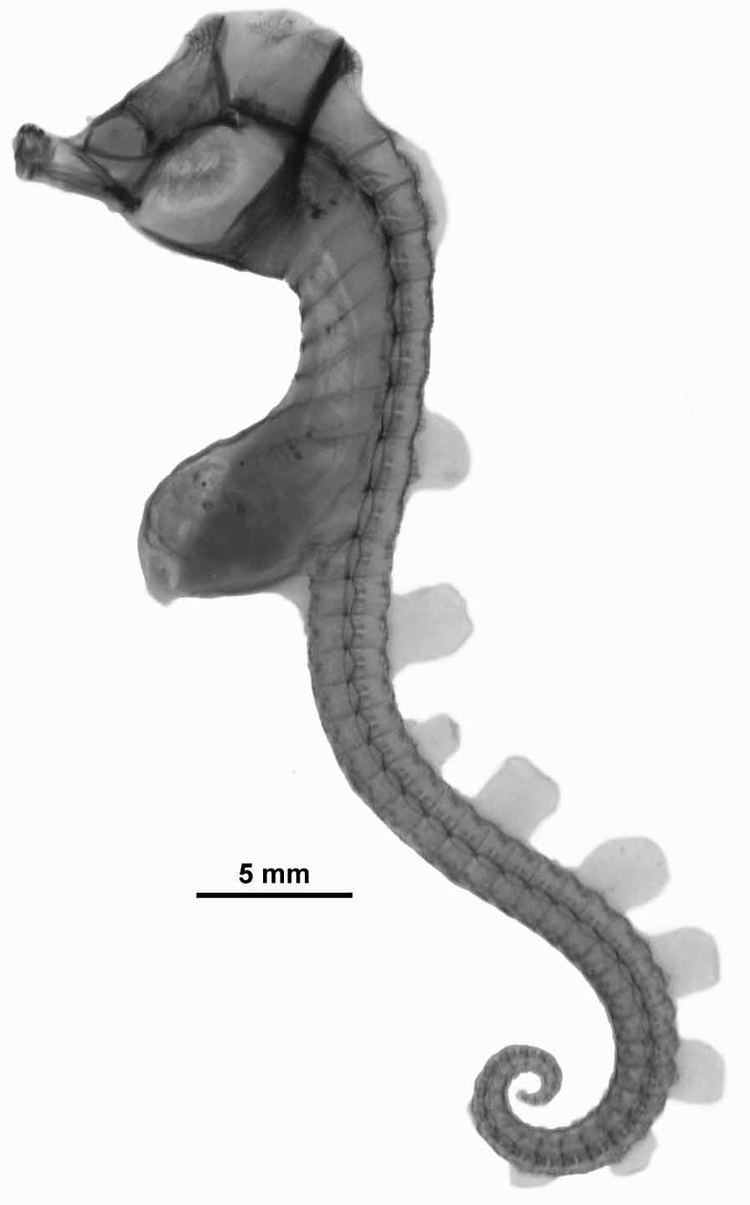Rank Species | Phylum Chordata Genus Hippocampus | |
 | ||
Similar Hippocampus debelius, Lichtenstein's seahorse, Bullneck seahorse, Hippocampus colemani, Hippocampus waleananus | ||
Hippocampus paradoxus
Hippocampus paradoxus, the paradoxical seahorse, is a small seahorse in the genus Hippocampus. The only known specimen was captured in 1995 and remained unnoticed in a museum until 2006.
Contents
Description
The species name paradoxus was given because the seahorse is very different from all of the other members of genus Hippocampus; the seahorse is paradoxical. It is most closely related to another seahorse, Hippocampus minotaur. Like all seahorses, this species is sexually dimorphic. It is theorized that the brood pouch is attached on the ventral side of the seahorse, near the top of the tail and connecting to the seahorse's chest. This theory is based on its similarity to Hippocampus minotaur, but has not been confirmed because a male specimen has not been collected.
The only known specimen is a female, and has a vertical height of 6.5 cm. This species has 8 trunk rings and 11 pectoral fin rays. A series of lobes that resemble small fins make up the majority of this fish's body. The lobes start near the mid-line of the seahorse's trunk and continue to the end of the seahorse's tail. The first lobe does resemble a small dorsal fin, but it is not one. Unlike all of the other members of its genus, this species of seahorse lacks a dorsal fin.
The holotype is yellow-cream in color, and it is covered with small brown spots. It is possible that the color of the specimen has changed while the body was preserved inside of formaldehyde, so the actual color of this animal in the wild is unknown.
Distribution
The holotype was discovered south-west of Esperance, Western Australia, on the western periphery of the Great Australian Bight. The exact coordinates of the specimen's collection was near 34°12′S 121°32′E.
Habitat
This species was collected at a depth near 102 m (335 ft). The collection site was in the benthic zone, at the bottom of the ocean, near the substrate (which in this case was sand). The collection site was full of different types bryozoans, such as lace corals and sponges. Waters at the collection site are relatively warm.
